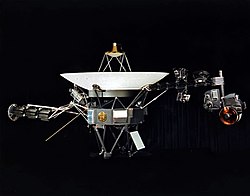Explorations/Astronomy/Quiz

Exploratory astronomy is a lecture and an article studying the origin or initial construction of the universe or any portion. It is an offering from the school of physics and astronomy.
You are free to take this quiz based on exploratory astronomy at any time.
To improve your score, read and study the lecture, the links contained within, listed under See also, External links, and in the {{radiation astronomy resources}} template. This should give you adequate background to get 100 %.
As a "learning by doing" resource, this quiz helps you to assess your knowledge and understanding of the information, and it is a quiz you may take over and over as a learning resource to improve your knowledge, understanding, test-taking skills, and your score.
Suggestion: Have the lecture available in a separate window.
To master the information and use only your memory while taking the quiz, try rewriting the information from more familiar points of view, or be creative with association.
Enjoy learning by doing!
Quiz
[edit | edit source]
Hypotheses
[edit | edit source]- Exploration consists of going there to study what's there by being there.
See also
[edit | edit source]External links
[edit | edit source]- International Astronomical Union
- NASA/IPAC Extragalactic Database - NED
- NASA's National Space Science Data Center
- The SAO/NASA Astrophysics Data System
- SDSS Quick Look tool: SkyServer
- SIMBAD Astronomical Database
- SIMBAD Web interface, Harvard alternate
- Spacecraft Query at NASA
- Universal coordinate converter
